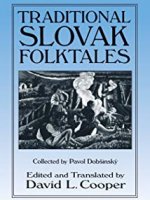
Slovak Folktales by Pavol Dobšinský is a collection of traditional Slovak fairy-tales in English translation. Storytelling which was handed down from generation to generation is said to be a tradition. Storytelling and folktales are the natural reflection of people‘s everyday lives, traditions they once mantained. They express the identity of the people, their culture and life as well. Slovak folk tales focus on the Slovak people. Slovak folk tales are fascinating and universal at the same time. They estabilish human mutuality, human relationships. According to Ľudovít Reuss of Ľudovít Štúr‘s Romantic generation, these relics of ancient times might have been created from the 7th until 9th centuries, even before the Christianization of the ancient Slovaks.The Slovak people performing in the Slovak folktales become wise thanks to their misfortunes. They set out on journeys to look for truth of their identity being somewhere in the world. Otherwise, their own world could not exist. Therefore, the main characters of the tales went out into the world to find their fortunes, or to solve painful problems at home. The determination to leave was inspired by the will to overcome their difficult circumstances.The main character often undergoes a task that seemingly cannot be fulfilled at all: e. g. the main character in the tale Three Golden Pears takes to his task bringing three golden pears to his bride which is a feature characteristic of Slovak fairy tales. The feature of differences plays a crucial role here. It can be e.g. either the conflict between dilligence and laziness, or power or weakness. Other elements featured may also concern dragons, devils and nature itself. The main characters are often idealised. Slovak folktales existed among ordinary people for many years. These tales were collected by the young Slovak intellectuals such as Samuel Reuss, Janko Francisci, A. H. Škultéty, Pavol Dobšinský and others. The Evangelical pastor Pavol Dobšinský devoted much of his life to collecting Slovak folk tales. He collected 153 folktales and published them in magazines. He then published the tales in three volumes entitled Slovak National Folktales. According to him, Slovak folk tales spelled out the faith, the longing and the hope that have been in the nation‘s soul for thousand of years. Dobšinský adjusted the collected folktales using the grammatical rules of the newly codified Slovak language. The tales became a means to keep, to preserve, and to spread the Slovak language. They remain as a means to keep the Slovak’s deep belief in justice and in the victory of good over evil.
Peter Chovan